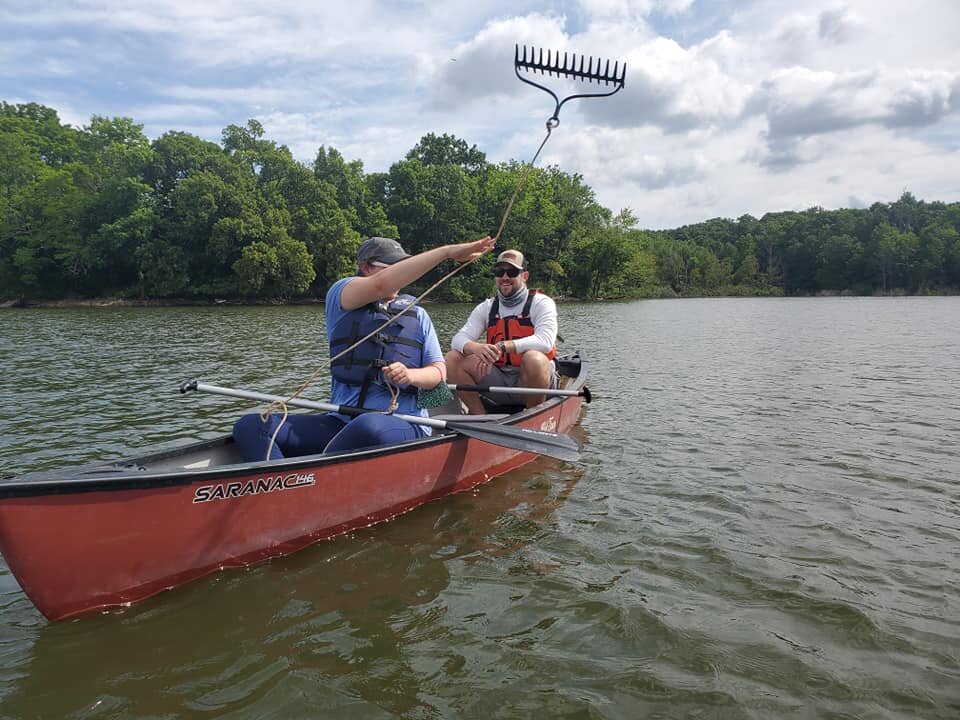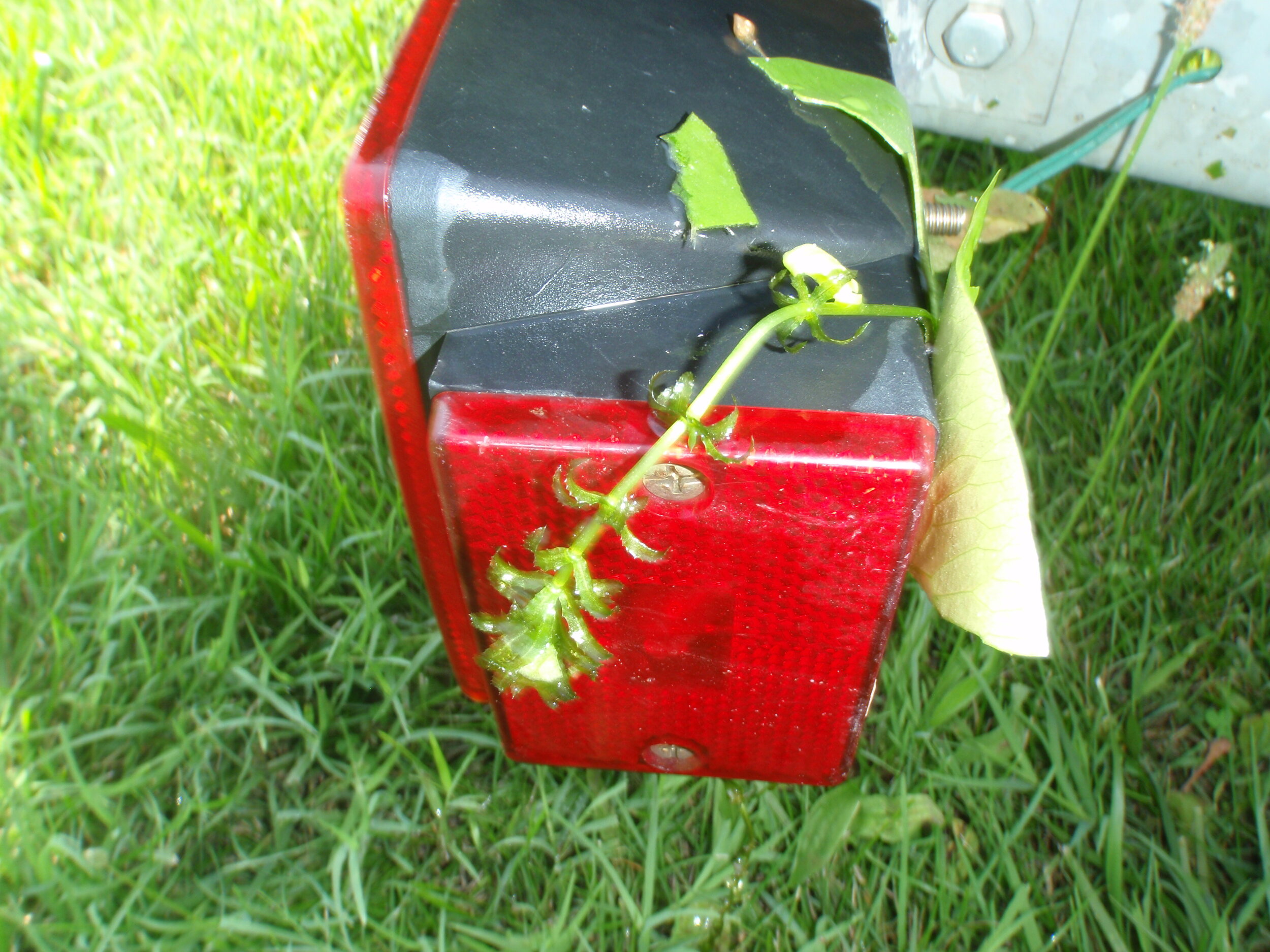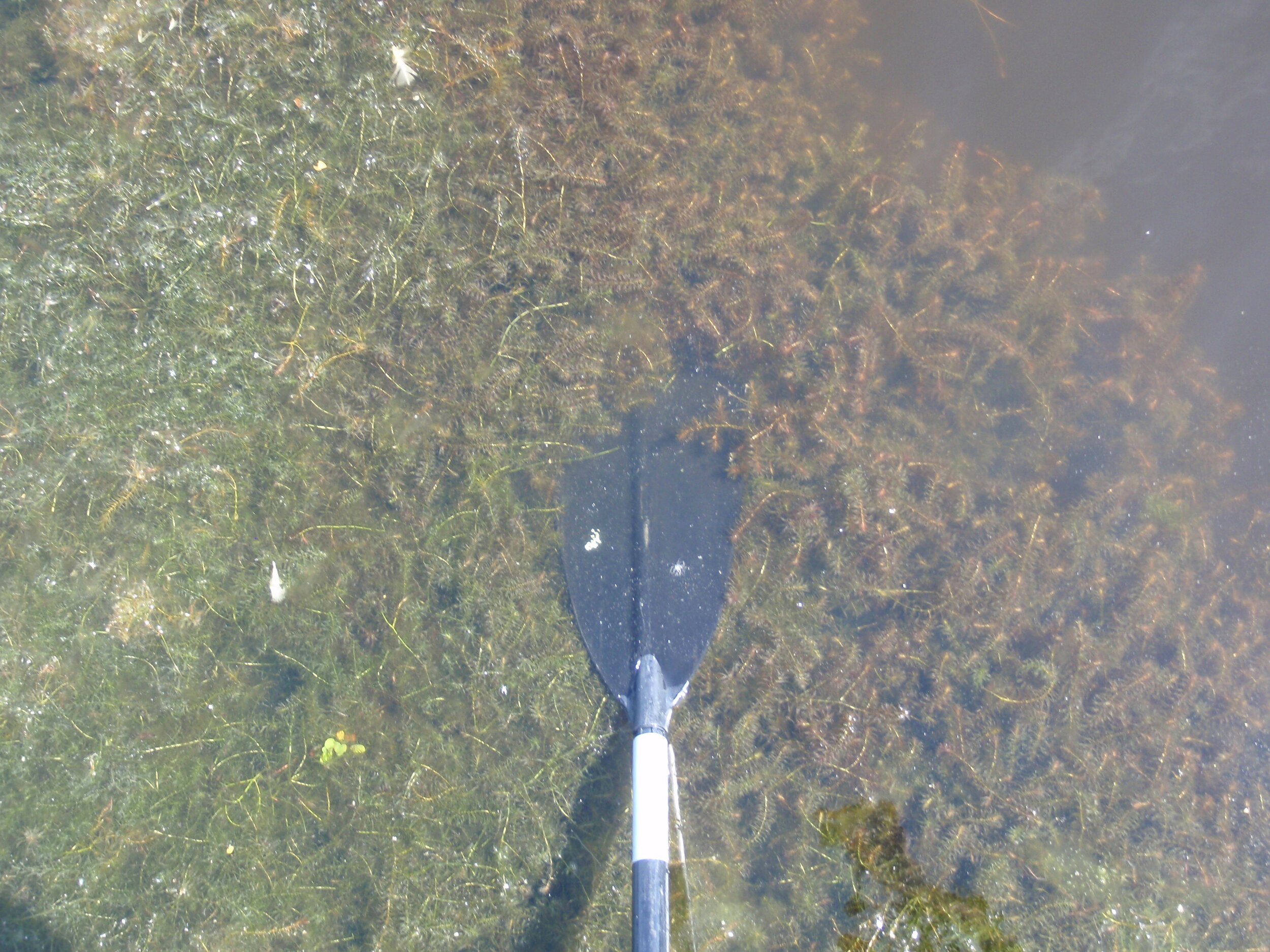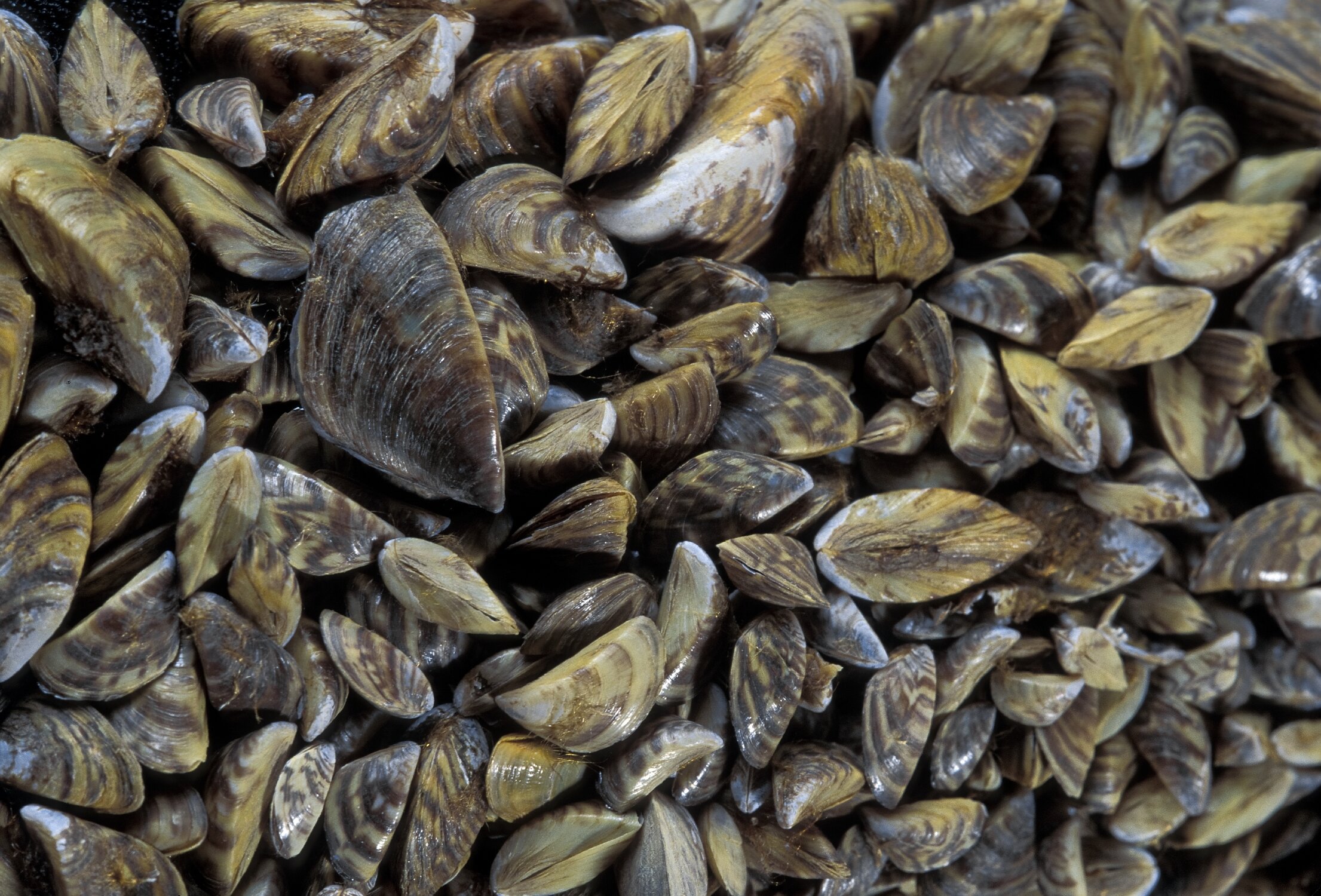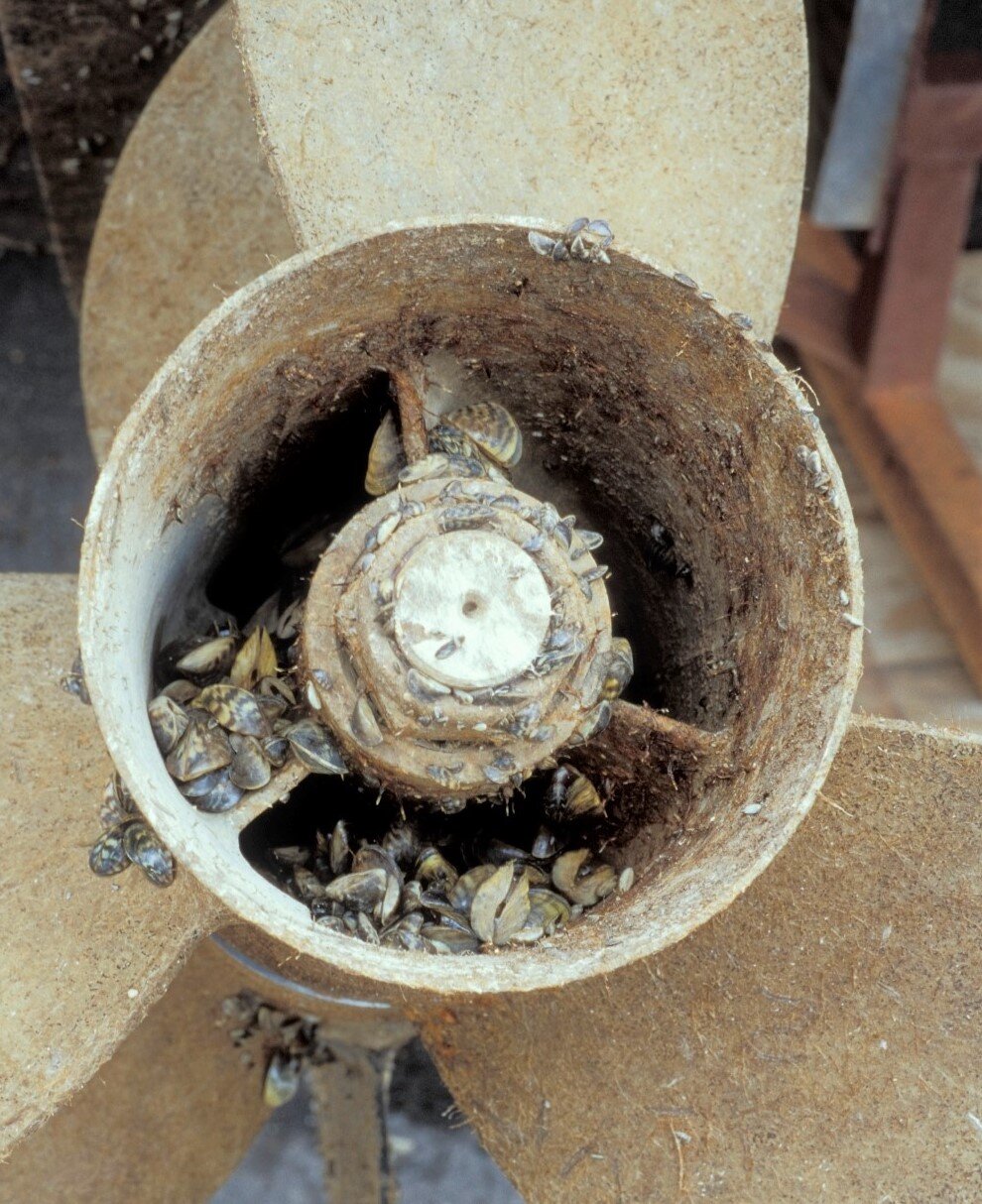There may be a monster lurking in your aquarium. Does it sound like something out of a 1950s horror movie – The Creature from the Black Lagoon? No, it’s Attack of the Zebra Mussels!
Recently the Missouri Department of Conservation (MDC), as well as fisheries experts across the nation announced that zebra mussels have been found in “moss balls”, a type of algae known as marimo. Moss balls are popular with aquarium owners and were shipped to pet stores across the United States, including here in Missouri.
It is still unknown at this time how the zebra mussels got into the moss balls, but one thing is for certain: aquarium water with the contaminated algae could contain zebra mussel larvae (known as veligers) that could be introduced to a stream or lake if the aquarium water is dumped or changed without being decontaminated.
“In the case of zebra mussels, the problems can be both biological and economical. The huge clusters these fingernail-sized mussels can form (sometimes as thick as a million mussels per square meter) can cause operational problems for pipes and other water-intake equipment. Their clustering activities can also kill native mussels and disrupt aquatic food chains, according to MDC’s Francis Skalicky.
Zebra mussels first came to the United States in the ballast holds of ships that were dumped in the Great Lakes in the late 1980s. Since then, Federal statutes require ballast water to be dumped at sea. Since their introduction spread is by recreational boaters taking vessels from one lake or river to another.
While zebra mussels are one of the most infamous aquatic invasives, they are not the only threat to Ozarks streams. JRBP has been assisting MDC monitor for hydrilla, another invasive associated with aquariums that have been observed in Greene County. Last year, JRBP staff participated in hydrilla monitoring on Fellows Lake north of Springfield. Thankfully, it appears that early detection and monitoring have kept a large-scale Hydrilla outbreak at bay. Other invasive species include Didymo, Asian Carp, Northern Snakeheads, and the Rusty Crayfish.
With invasive species, prevention is key, followed by quick identification and action should they be observed in the field. So, what can the average boater, hunter or angler do to combat these aquatic invaders? The simplest way to keep invasives out of our Ozarks waters is to Clean, Drain, and Dry every time you take your canoe, kayak, pontoon, or any other kind of boat out of the water.
Clean boats, trailers, and any equipment (including paddles and life jackets and remove any mud, plant material, or debris before launching or recovering a watercraft. A power washer is best, but even your backyard garden hose will do. Disinfecting with a bleach solution (1/2 cup of bleach to 5 gallons of water) or alternatives such as vinegar are also recommended.
Drain all water from your boat – live wells, bilges, and compartments with drain plugs have to potential to house aquatic invasives and fish diseases that may be hiding in what appears to be clear water. Make sure all drain plugs are removed.
Dry boats and equipment before leaving an access or ramp. If possible, leave your vessel to air dry in the sun for at least 5 days before relaunching in a new waterbody.
In addition to these steps, anglers should dispose of any material or bait in the trash, rather than the water, and never move fish from one waterbody to another, thereby helping prevent the spread of aquatic invasives and fish diseases.
“Invasive species are extremely opportunistic and always on the move. They can hitch a ride on your boat or even in the frame of your boat trailer,” said MDC Fisheries Management Biologist Kara Tvedt. “They can also hitch rides on kayaks and canoes. Waders can also be a carrier. And, you don’t have to be a hard-core enthusiast to be a vector. It just takes that one time.”
As we gear up for the 2021 boating season, incorporating these simple steps into your routine before and after getting underway is a way for us to recreate responsibly on our local waters. Recreational boaters of all kinds are our first line of defense when it comes to aquatic invasives. Following Clean Drain Dry practices and helping spread the word to fellow boaters will ensure that our Ozarks waterways remain free of invasives such as zebra mussels, hydrilla, and others.
We’ll see you - but hopefully not the invasive species - on the river.
Todd
